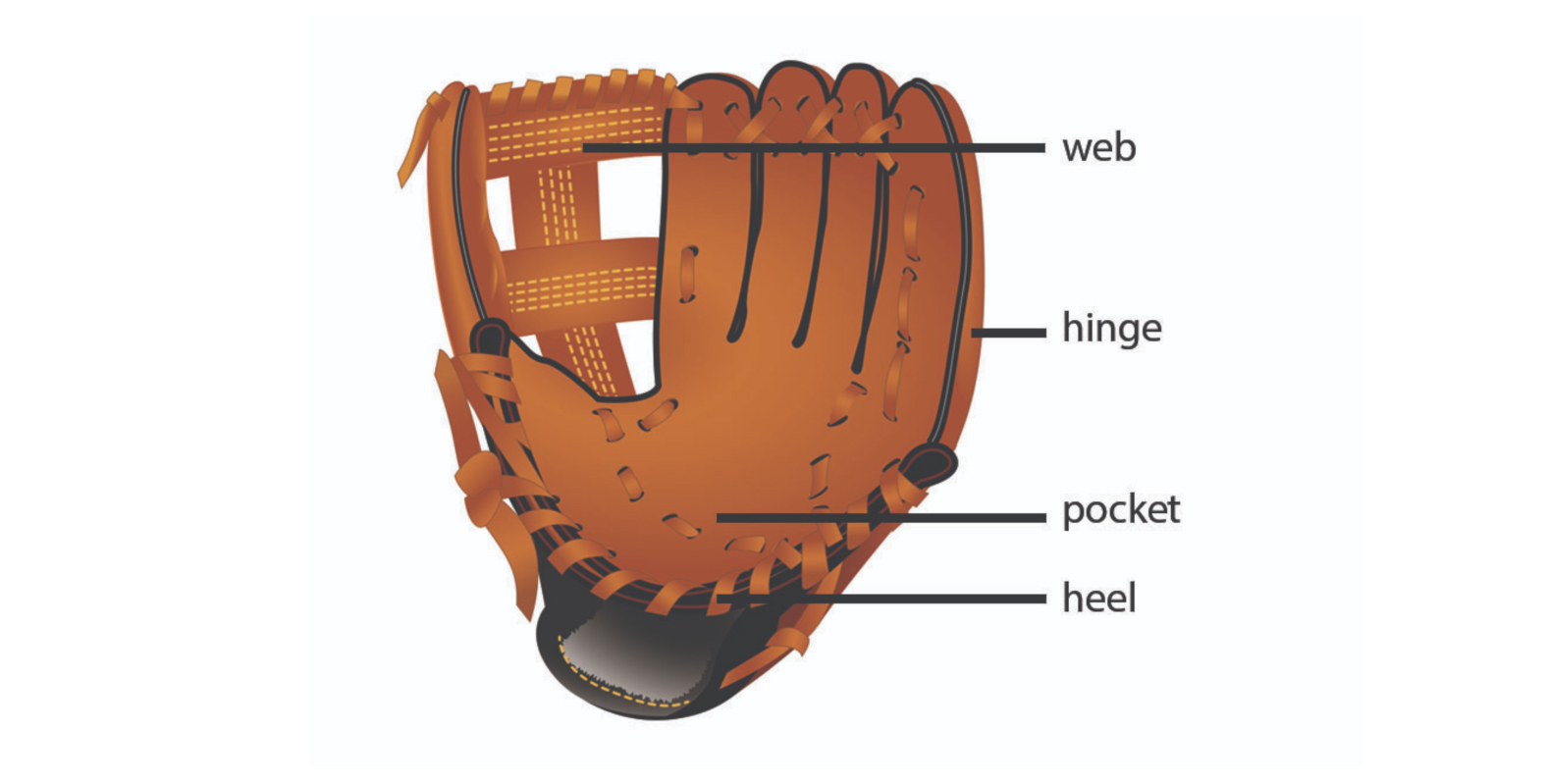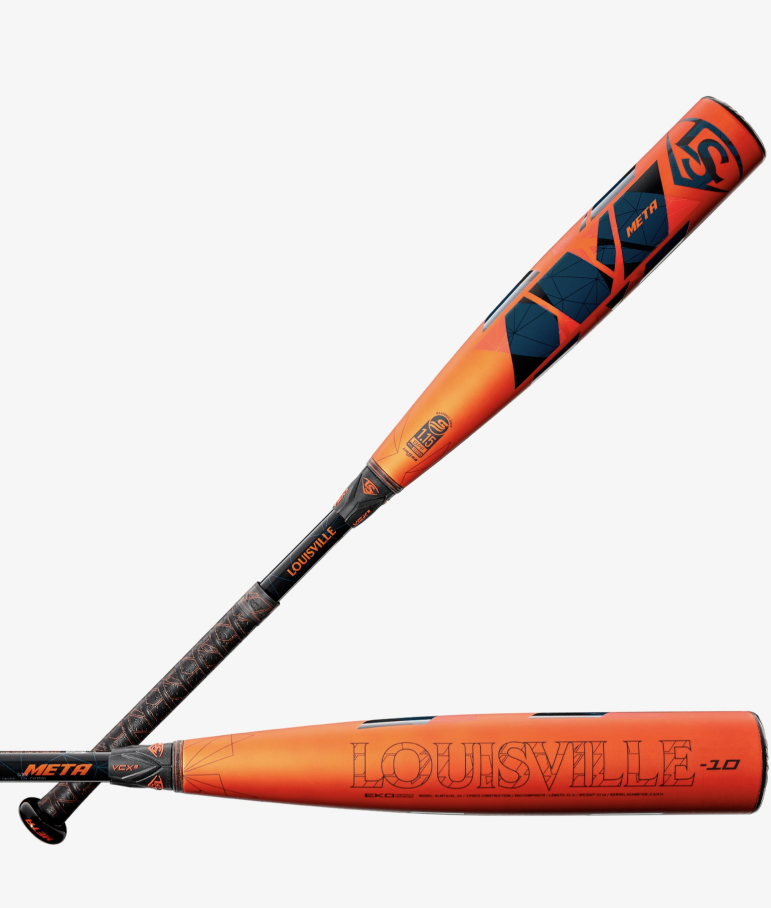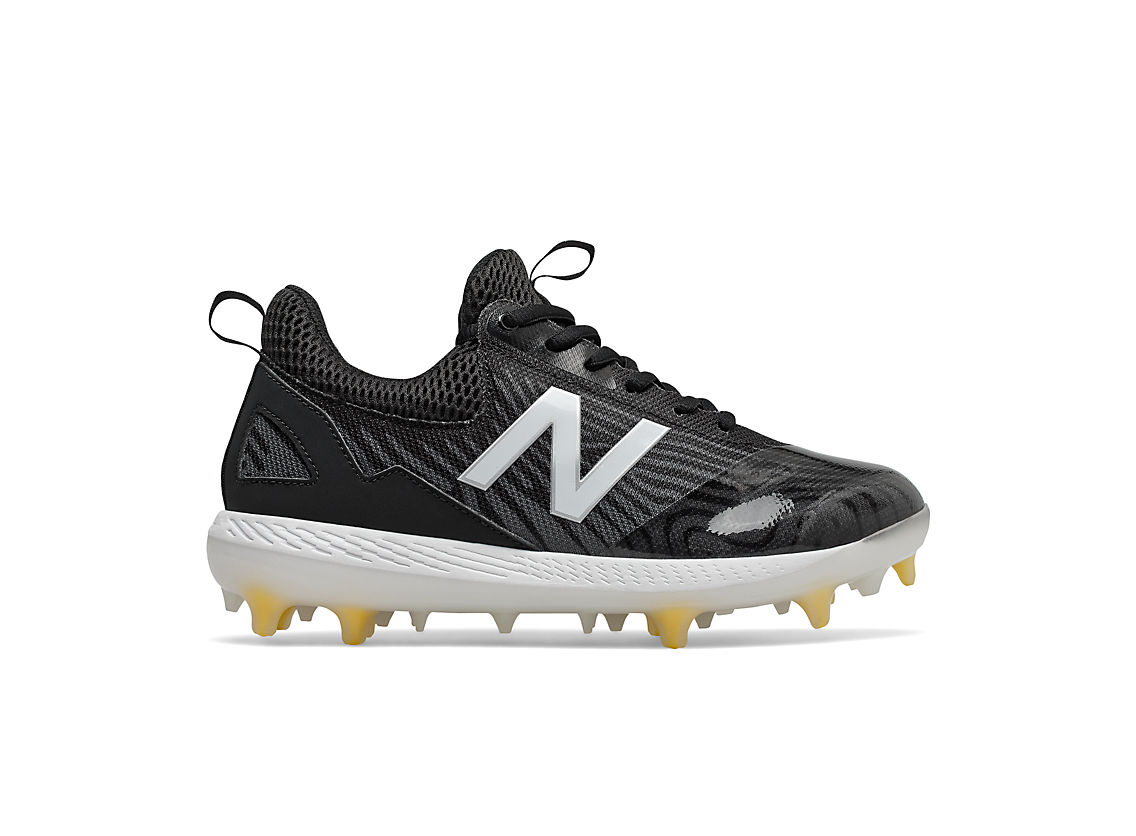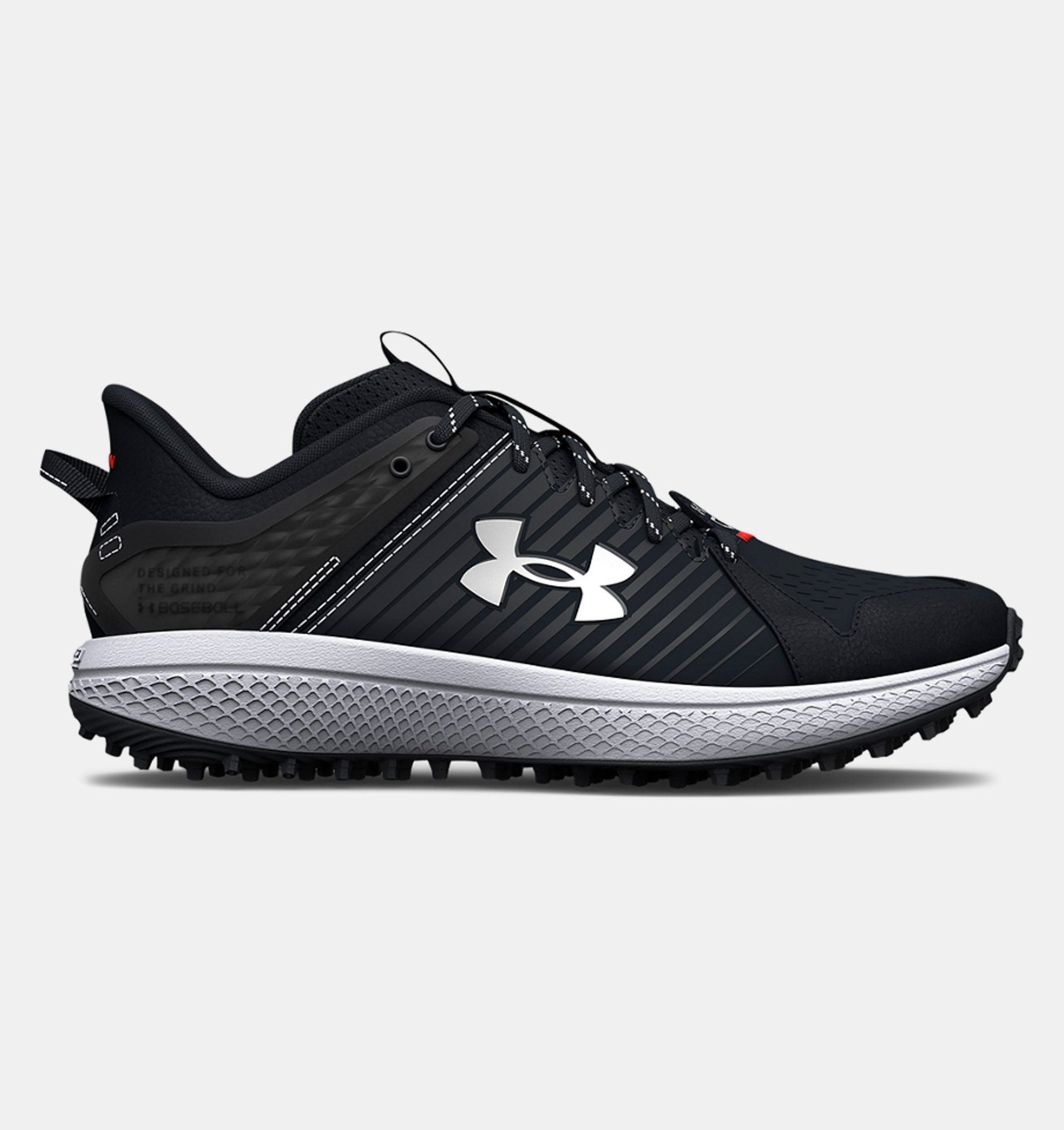The world of competitive travel baseball can be overwhelming, and knowing where to start is challenging. As travel baseball becomes increasingly competitive, it’s essential to ensure your athlete has the necessary equipment to play with their peers.
When you start your journey looking for the right equipment, the abundance of options can feel intimidating. We hope this guide can help better organize this process and explain what level of quality to expect from each item.
Whether your child is just getting started in competitive travel baseball or they’re a seasoned pro needing a refresher, use this comprehensive guide as a place to start your season.
Arguably the most crucial piece of equipment for your athlete is their glove. Your player’s needs will vary based on age, position, and level of play. Here are a few things to consider when shopping for a youth baseball glove.
Related Post: How to Train for Youth Baseball Tournaments

First, let’s break down the different parts of a baseball glove. Get familiar with the anatomy of the glove to help better understand your child’s needs. Knowing exactly what fit your athlete’s needs will help you select the right glove.
The Pocket is typically found just above your palm. The pocket is where the ball naturally settles into the glove. Generally speaking, the deeper the pocket, the easier it is to catch the ball.
The Web is the space between your thumb and forefinger. This refers to either closed or basket styles used by catchers and pitchers. The web also includes striped patterns like H Web, I Web, and Cross, typically used by infielders.
The Heel is the heavily-padded portion covering the bottom of your hand. This area of the glove protects from catching fastballs.
The Hinge is extremely important to break in your glove. The hinge is the line where your glove folds. It starts near the bottom of your pinky finger, near the heel, and usually runs through the web.
Wrist Adjustment allows you to adjust how snug or lose your glove fits. You can find the option for wrist adjustment in many youth baseball gloves.
Once you’re familiar with the anatomy of the glove, next consider which type of glove is a right fit for the position your athlete plays.
Infield gloves are the smallest on the field for easy transfers from glove to throwing hand. They have a shallow pocket and short fingers.
Pitcher gloves are similar in size to infield gloves, often with closed webs to conceal pitch grips and communication with the catcher.
Outfield gloves have deep pockets and long fingers for maximum reach and security. Looking for a longer glove allows your outfielder to catch balls close to flying over the wall.
First base mitts are typically larger than other gloves, have conjoined fingers, and have a flat back panel to help scoop low and errant throws. The curved edge allows first basemen to scoop up balls closer to the ground. They’re deep-pocketed, making transfers more challenging. However, that’s a task first basemen rarely execute.
A catcher’s mitt is well-padded for protection with a basket pocket for comfortable, intuitive receiving.
When choosing the material for your glove, there are countless options available. We’ve broken down the differences between synthetic gloves and leather gloves. We’ll also dive into the differences between each type of leather glove. Ultimately, looking for comfort and quality should be the defining factor in the glove you choose.
Synthetic gloves are made of plastics, cloth, and other materials to create a lightweight, soft, and inexpensive glove. Usually, they’re intended for introductory players.
These gloves are low quality and won’t mold to a player’s hand. Nor are they geared for impact resistance; however, they are an excellent first glove for kids. As you know, kids grow fast. Opting for an inexpensive, replaceable glove as they learn the fundamentals may be a cost-effective choice.
If your athlete shows interest in continuing baseball after they’re 10 – 12 years old, it may be time to upgrade. Leather gloves are more permanent and of higher quality. Breaking them in overtime makes them fit a player’s hands perfectly. Although they can get expensive, especially with premium full-grain leathers, they are longer-lasting.
Full-grain leather gloves refer to a leather glove in which the natural grain still remains. While not very common in youth baseball, this high-quality leather is exceptionally durable. Once a glove of this material is broken in, it’s expected to last a long time.
Kip leather gloves are high-end, soft leather gloves. These expensive gloves are considerably easier to break in than other leather options.
A premium steer hide glove is durable, heavy, and stiff leather. These gloves can be tricky to break in, requiring a lot of time. However, many feel that the time to break in these gloves is worth it, as you’re left with a dependable, long-lasting glove.
Leather or cowhide gloves are the most standard leather baseball glove and are often the first option that comes to mind when purchasing a leather glove. As many of the options for cowhide gloves come pre-oiled, this is a great first glove for youth baseball players as it’s easy to maneuver with virtually no break-in time.
Finding the perfect glove doesn’t need to break your bank account. There are plenty of quality options available to you for an affordable price. As you probably know by shopping around, there are substantial price differences between gloves.
Seeing these massive price tags can be a shock, but some good news is synthetic gloves can start around $20 at major sporting goods retailers. If you’re looking to upgrade your child’s glove, a leather mitt retails for around $60, and premium models sell for much more.
As a good rule of thumb, the price spent on a glove should reflect your athlete’s skill level and passion for the game. Dropping over $100 on a quality glove for a player just starting to show an interest in the game might come back to bite you later. However, this is more justifiable for an athlete interested in playing baseball for the long term.

Marucci C Type: Maldives
($379.99)
Why we love it: A work of art with an I-Web for the versatile infielder. The Maldives is lightweight and easy to break in, and visually striking to look at in baby blue.

Rawlings Exclusive HOH R2G Contour Fit
($224.95)
Why we love it: Ideal for outfielders, the Contour fit is slightly slimmer for excellent control of the pocket.

($55)
Why we love it: A durable entry-level glove for every position, soft pigskin leather that is ready to squeeze right off the rack.
Another substantial piece of equipment for your travel youth player, or any baseball player for that matter, is their bat.
The best bat for your baseball player ultimately comes down to the one that makes them most comfortable at the plate. Length and weight, weight distribution, construction, and certification are all important factors when shopping for youth baseball bats.
Choosing suitable material for your athlete’s bat is crucial in ensuring they’re comfortable with their equipment. These days, there are plenty of great options to shop from.
The king of ping was the first non-wood bat in competitive baseball. Aluminum alloy bats are lightweight, nearly indestructible, and still extremely popular despite the rise of composites. There is no breaking-in period for aluminum bats, and they remain the most cost-efficient bat on the market.
Alloy bats can be a fantastic choice for younger players. While relatively inexpensive, these bats can send a baseball out at a greater distance than other options. Younger players especially do not have great accuracy, so this compensation allows them to have fun while playing.
Aluminum alloy bats can range from $40 to $400, so there is a lot of flexibility in finding the right bat for the right cost.
Known for large sweet spots and maximum jump, composite bats are made of carbon fiber polymers. Composite bats take time to break in; most need a few hundred hits to reach full potential as the fibers tighten further. Though sometimes adverse to cold temperatures, composite bats are more durable than wood, and their flexibility leads to fewer stingers from mishits than aluminum alloy.
Composite bats can start on the lower end at around $50. Composite bats can be another great option for youth players, as they’re lighter than aluminum alloy bats.
Look no further than classic wood for a bat like the big leaguers. Purists will argue that there is no better stick to swing than a wood bat balanced perfectly for your swing. Wood bats lack the durability of metal or composite bats and, of course, can break on poor contact.
Many youth players opt not to use wooden bats, but it is possible to find affordable options around $50.
Non-wood bats are made of either one whole piece or two pieces: the handle and the barrel. One-piece bats have limited flexibility, and the barrel spends more time in the zone to favor power hitters. Two-piece bats are more flexible, taking away the sting of mishits. Popular among contact hitters because of their smooth, controlled motion, these bats can be constructed with a combination of materials, such as a composite barrel with an aluminum handle.
When deciding what baseball bat to buy, you’ll want to consider length, weight, drop weight, and weight distribution.
A longer bat offers greater reach but gives up control of the barrel. The longer the bat, the heavier it swings. A shorter bat loses reach in favor of control. A simple test to determine if a bat is an appropriate length is to stand a bat on its end next to your leg. If the cap reaches your palm, swing away.
The preferred weight of the bat is entirely based on what feels best to your player. A lighter bat has increased control and speed, and a heavier bat generates more power.
Drop weight is the length of the bat in inches minus the weight in ounces. So a 30-inch bat that weighs 27 ounces would have a drop weight of -3. The permitted drop weight of a bat differs between age levels and bat certifications. You can read about bat certifications below.
Balanced means the weight is distributed evenly throughout the bat and is well suited for players looking to increase their bat speed or have better control of their swing.
End-Loaded bats carry most of their weight in the barrel to create a whip-like action and generate power. There is less control over end-loaded bats. They work best for hitters with the strength to generate their own bat speed.
Certifications regulate bats for performance and safety at different levels of the game. Confirming the certification requirements is essential to ensure your athlete’s bat is permitted in their league or tournament.
Bats with the USA Baseball certification are the most popular for youth baseball players and standard among most leagues (AABC, Babe Ruth/Cal Ripken Baseball, Little League Baseball). USA bats are lightweight for young, developing players and provide less ‘pop’ than other non-wood alternatives.
USSSA bats are heavier, have a larger barrel, and provide more reaction or spring. They are built to maximize performance and fall into two categories, 14 and under and 15 and above.
With the exception of bats on the USSSA banned list, Ballparks of America allows bats certified BPF 1.15 without size or weight restrictions. Wood composite bats are permitted without limitation as well. Please note USA Bats can be used in USSSA leagues. USSSA bats are not permitted in USA leagues or tournaments.
To level the batters’ advantage and improve safety, the NCAA adopted BBCOR certification in 2011. BBCOR caps drop weight (at -3) and require weight distribution similar to wood bats. Soon after, the NFHS adopted BBCOR for high school baseball. Middle school hitters may switch to BBCOR if they intend to play in high school.

USSSA ($299)
Why we love it: The Meta has great control, and its composite barrel has an enormous sweet spot.

Demarini Voodoo One, USA
($199)
Why we love it: Outstanding balance and surprising swing speed for such a powerful aluminum one-piece bat.

Southern Timber Custom Pro Series Maple Youth, Wood
($110)
Excellent balance is essential for baseball players, and it starts with the feet. Cleats give a player grip to cut, run, plant, and keep balance. Here are valuable key factors to consider when shopping for youth baseball cleats.
Molded plastic cleats are the most popular in the game. They are lightweight, durable, and less expensive than metal cleats. Plastic cleats have a high density, which gives the foot better weight distribution than metal spikes. This means molded spikes tend to be more comfortable. Metal cleats, however, have superior grip quality, particularly on playing fields with long grass or wet or muddy conditions.
Professional and collegiate players favor metal cleats. Heavy and less comfortable than molded cleats, metal cleats offer the most traction and grip but are only allowed on some surfaces.
For instance, Ballparks of America does not permit metal cleats on the synthetic fields of our iconic replica parks.
It’s a good idea to check league and tournament rules to see if they allow metal cleats, especially before purchasing them. Most youth leagues do not allow metal spikes until level 13U for safety reasons.
Players prefer turf cleats for artificial surfaces and dry or indoor fields or as practice shoes. Styled like a sneaker, turf cleats are lightweight with minor gripping elements on the sole. Turf shoes provide less traction than other youth baseball cleats but can be used on natural playing surfaces.
There are several factors to consider when deciding what style of cleat will work best for a player.
Low-cut cleats support a player’s speed and mobility. They are ideally suited for outfielders and athletes who rely on reaching top sprint speeds or making frequent sharp cuts. They are lightweight and allow prime flexibility. The tradeoff with low-cut cleats is that they provide the least amount of ankle support.
High-cut baseball cleats offer the most support and foot safety. They are heavier than low-cuts and benefit players looking for a sturdy base, often preferred by batters who hit for power. Mid-cut cleats provide the best of both worlds: meeting in the middle to give a mix of flexibility and support.
Youth baseball cleats are constructed with mesh, leather, synthetic leather, or a mix of those materials. Leather and synthetic leather provide the most support, while mesh offers the most flexibility and airflow.
Cleat sizing is in line with everyday sneakers and should be brought to fit now. Cleats should fit snugly to keep the foot in place—too much movement will cause blisters. If buying up a size for young players, purchase within a half-size—too much room in the toe can lead to ingrown nails and other injuries.
Like most equipment, youth baseball cleats can cost as much as you’re willing to pay, $120 or more. In most cases, your athlete should be able to find a quality pair of cleats from a reputable brand for less than $60. We recommend brands like New Balance, Adidas, Nike, Mizuno, and Under Armour.
Related Post: How to Fundraise for Youth Travel Baseball Teams

($75)
Why we love it: As light as a feather with fiber-infused cleats that perform with the grip of metal spikes.

($65)
Why we love it: The Trout 8 Pro is lightweight and breathable, well-cushioned for comfort, and has a drag-on toe for extra traction, especially on worn playing surfaces.

Under Armour Boys Yard Turf Jr Baseball
($65)
Why we love it: The UA Turf model has a significant grip for young players who prefer less of a cleat and more of a traditional sneaker.
If your child is a catcher, you know it’s necessary to consider equipment outside bats, gloves, and cleats. Finding the right catcher equipment is of utmost importance. When purchasing catcher’s gear, the safety and comfort of the player should be the number one priority.
There are 2 predominant styles of catcher’s masks for your athlete.
Many think of the two-piece mask as the “classic” style of a catcher’s mask. Often, these masks are a more affordable option. Catchers who prefer this style say it offers them more visibility, particularly for their peripheral vision.
However, it’s important to note this style of mask leaves the back and the sides of a player’s head more exposed and less protected.
In recent years, the hockey-style catcher mask has grown in popularity. These masks offer greater protection than their traditional counterparts. Although these masks aren’t as easy to remove quickly, many leagues have begun requiring them due to safety concerns.
Catchers risk injury to their necks, ribs, collarbones, and stomachs each time they squat behind the plate. The importance of chest protection can not be overstated enough.
Related Post: Recognizing and Preventing Youth Baseball Injuries
When shopping for youth chest protection, consider factors like size and durability. To best protect your youth baseball player from baseballs, bats, and other playings colliding at home plate, it’s necessary to get the correct measurements.
To determine the correct size of your athlete’s chest protector, measure the area from the base of the athlete’s neck to the top of their waist.
Another protective equipment to invest in for your catcher are leg guards. There are many factors to consider when picking gear to protect catchers from getting hit by a loose pitch.
Like chest protection, leg guards are also measured inches from the knee’s mid-section to the ankle.
Most chest protections and leg guards are sold as a set, so buying these items together is often a cost-effective option.
For players who’ve finished growing and are still interested in pursuing baseball, it may be time to buy this equipment separately. Purchasing these items stand-alone allows you to pick the most accurately fitting gear.
Every team needs a uniform, but a lot goes into choosing the right ones, ordering them, and paying for them. Read our guide to youth baseball uniforms to take the guess work out of the task.
Though some players prefer to grip a bat barehanded, batting gloves are an essential for most hitters. Batting gloves contribute grip and control, and protection from bat-vibration stingers. They should be purchased to fit at game time. Depending on brand and style, batting gloves can cost between $15 and $60.
A necessary piece of the uniform for all players during day games, but especially so for outfielders who are most likely to chase balls lifted high into the sun. Traditional baseball flip-up shades have hit the pine in favor of stylish reflective protection with heavy-gripping elements down the arms. Quality, polarized, youth baseball sunglasses cost around $60, though there are options on the distant ends of the spectrum.
It’s called the “kinesthetic illusion” and for some batters it works. Science has proven that swinging a weighted bat in the on-deck circle actually produces slower bat swings immediately after in the box. However, science also shows that batters thinking their bat speed is faster is mental edge enough to improve results. Whether players should warm up with a bat donut ultimately comes down to their preference. You can find bat donuts in stores or online for around $10.
A flyback return doesn’t take much space in the yard. Roughly 6-feet tall, the return screen simply rebounds balls back to the thrower. They help fielders react and track different carems from a solid screen or simply provide a consistent throwing return. They are adjustable and most cost around $40-50.
Swing sticks are very popular for travel teams when warming up before games or at practice. Simply a soft ball on a long flexible rod with a grip on the opposite end. Batter can take repetitive swings while somebody holds it from a safe distance. There are other repetitive swing tools that can be used individually, like the SKLZ Hit-A-Way that straps onto a pole or tree with velcro. Both cost around $40.
There are some incredible VR simulators coming out that are incredible for hitters. Youth players can stand in realistic baseball environments and work on specific aspects of batting. WIN Reality is a popular training system on Oculus that has been adopted by MLB and collegiate programs but is also accessible for youth travel teams or individual youth players. VR batting simulators are especially great for developing plate discipline, strikezone awareness, and pitch recognition. WIN’s Pro Plan is $19/month, with an optional bat attachment sold separately.